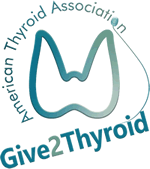Of the initial group of 123 patients, 74 of the patients had distant metastases at presentation and 49 patients developed distant metastases and 97% (119 patients) were considered aggressive based the initial pathology. The remaining 4 were considered low risk based on pathology and these were added to the 11 additional patients low risk patients with distant metastases for further study.
The types of cancers were 1) encapsulated follicular variant of papillary thyroid cancer with invasion (8), 2) infiltrative follicular variant of papillary thyroid cancer (2), 3) papillary microcarcinoma infiltrative follicular variant (1), 4) encapsulated papillary thyroid cancer classical variant (1), 5) encapsulated follicular carcinoma (1), and 6) encapsulated Hurthle cell thyroid carcinoma (2). A total of 10 of the primary cancers were less than 2 cm in size, all 15 had negative surgical margins and 6 were multifocal. Of the 12 encapsulated tumors, 9 had focal capsular invasion and 3 had extensive capsular invasion.
The metastatic sites included 12 bone metastases, 3 to the lung, 2 to the chest wall, and 2 to the liver, 1 to the brain, and 1 to the kidney, and 2 to the pelvic and buttock soft tissue. A total of 11 of the patients were symptomatic and the other 4 patients had incidental findings on imaging studies which demonstrated the metastases. Thyroglobulin levels post-operatively were noted in 6 patients and these levels varied from 1.2 to 7570 ng/mL.
The molecular testing was completed on 8 of the 15 cases. The results showed that 6 of these cancers had 2 or more mutations present. RAS mutations (4NRAS, 1HRAS) were present in 5 of the 8, 6 had TERT promoter mutations and in 4 of these 6 there were either BRAFV600E or RAS mutations present as well.
WHAT ARE THE IMPLICATIONS OF THIS STUDY?
Patients with low risk thyroid cancer are unlikely to develop distant metastases but when they do, there is a high rate of TERT promoter mutations. Although initial pathology is currently an excellent predictor of risk of cancer recurrence, further information from molecular testing may allow for more certainty. Future direction for research will continue to focus on predicting risk earlier on in the disease process and may include testing for molecular mutations such as TERT promoter mutations.
— Julie Hallanger-Johnson, MD

ATA THYROID BROCHURE LINKS
Thyroid Cancer (Papillary and Follicular): http://www. thyroid.org/thyroid-cancer/



